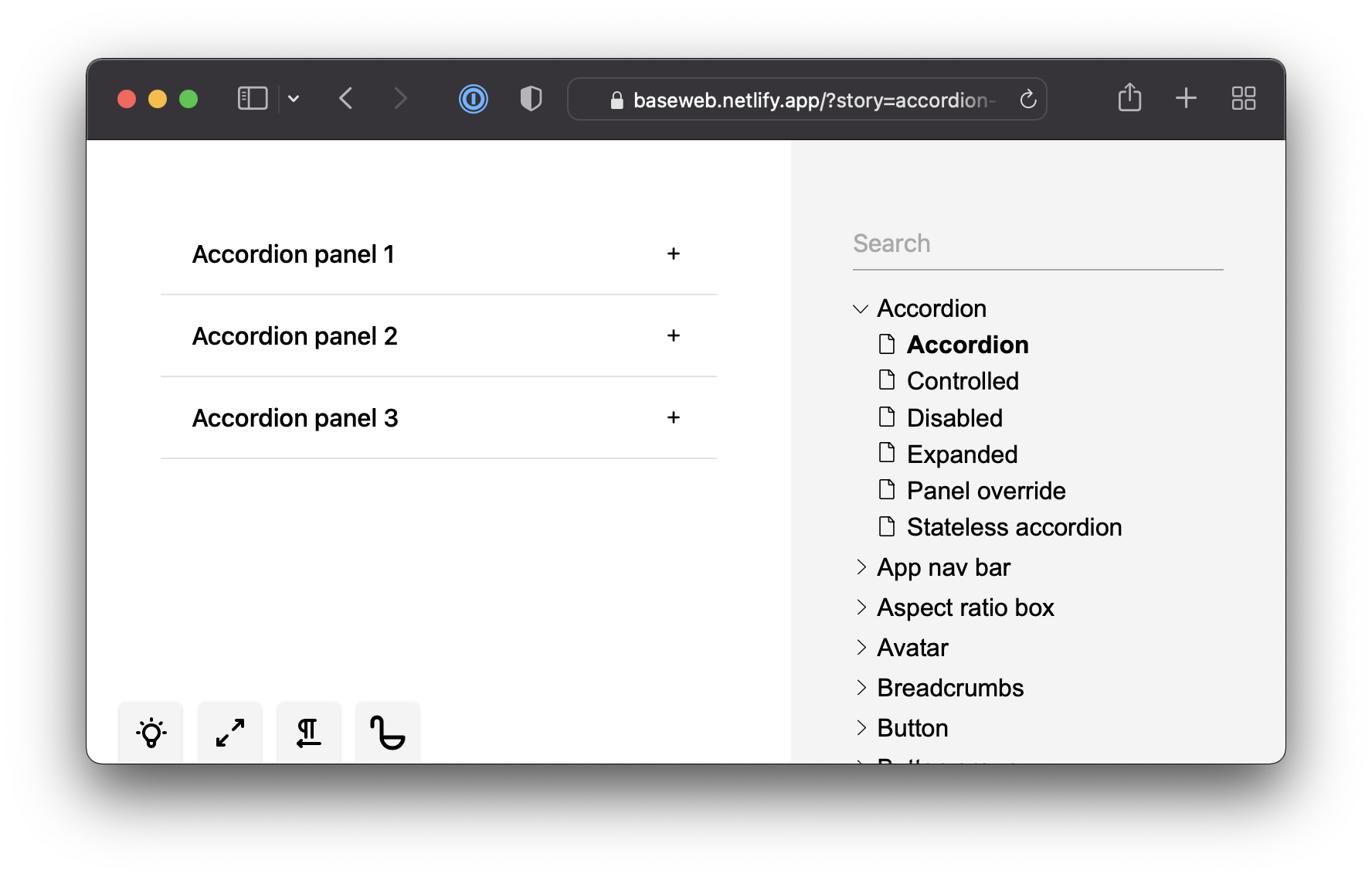If you use stories to develop your React components, you might be also interested in some sort of test automation. Ladle and Playwright makes it easy to take screenshots of your stories and compare them against the previous version before you changed your code. We call this visual snapshot testing. Let's take a look at how you can automate it with Ladle. This solution is quick, free and self-hosted.
It might surprise you how easy it is - less than 10 lines of code! Ladle exports a static meta.json file that lists all your stories and their parameters. We can use this file to generate our tests. Note: Terms snapshots and screenshots are used interchangeably.
You can jump into the working example right away. Or you can follow the steps below.
The Workflow
- Build Ladle using your stories
- Start an HTTP server for Ladle
- Fetch the meta.json file
- Dynamically generate a test for each story
- Take a screenshot & compare it with the baseline
- Commit changes if there are any
- Profit
Playwright
Playwright is a great headless browser testing framework. It works cross-platform and cross-browser and has a nice TypeScript API. It also comes with a test runner. We use it to navigate through Ladle and capture screenshots. It can be installed as:
pnpm install @playwright/test
We also need some other dependencies:
pnpm install sync-fetch
Stories
Let's create a story file src/abc.stories.tsx so we have something to test. Presumably, you already have stories with your own React components.
export const First = () => {
return <h1>First</h1>;
};
export const Second = () => {
return <h1>Second</h1>;
};
Second.meta = {
skip: true,
};
Test Setup
Now we need to tell Playwright what & how to test. We can create a single test file that dynamically creates subtests for each individual story. The following code in tests/snapshot.spec.ts is the secret sauce of this setup:
import { test, expect } from "@playwright/test";
// we can't create tests asynchronously, thus using the sync-fetch lib
import fetch from "sync-fetch";
// URL where Ladle is served
const url = "http://127.0.0.1:61000";
// fetch Ladle's meta file
// https://ladle.dev/docs/meta
const stories = fetch(`${url}/meta.json`).json().stories;
// iterate through stories
Object.keys(stories).forEach((storyKey) => {
// create a test for each story
test(`${storyKey} - compare snapshots`, async ({ page }) => {
// skip stories with `meta.skip` set to true
test.skip(stories[storyKey].meta.skip, "meta.skip is true");
// navigate to the story
await page.goto(`${url}/?story=${storyKey}&mode=preview`);
// stories are code-splitted, wait for them to be loaded
await page.waitForSelector("[data-storyloaded]");
// take a screenshot and compare it with the baseline
await expect(page).toHaveScreenshot(`${storyKey}.png`);
});
});
Run It
Our setup is ready, we just need to run it. Let's add some package.json scripts that we can use as shortcuts:
{
"scripts": {
"serve": "ladle serve",
"build": "ladle build && ladle preview -p 61000",
"test:dev": "TYPE=dev pnpm exec playwright test",
"test": "pnpm exec playwright test",
"test:update": "pnpm exec playwright test -u"
}
}
We also need to setup playwright so it starts a web server before running our snapshots:
export default {
webServer: {
command: process.env.TYPE === "dev" ? "pnpm serve" : "pnpm build",
url: `http://127.0.0.1:61000`,
},
};
If you use yarn or npm you might want to use npx instead.
The first time you run the test script it will error out since it needs to create the baseline screenshots in tests/snapshot.spec.ts-snapshots folder. The second run will succeed:
Running 2 tests using 1 worker
✓ tests/snapshot.spec.ts:23:3 › abc--first - compare snapshots (259ms)
- tests/snapshot.spec.ts:23:3 › abc--second - compare snapshots
1 skipped
1 passed (952ms)
You can keep adding more stories and they get automatically covered by visual snapshots. If you change an existing story, the test will fail. The playwright also outputs a diff image that highlights the differences between the baseline and actual screenshot. If everything seems ok, you need to run test:update to update existing snapshots. When your code matches the desirable looks you should commit both the code and snapshot changes. This updates the baseline for the future code changes.
Possible Improvements
The first problem you might run into is that your CI (tried Github Actions yet?) might render fonts differently than your local machine. The easiest way to make sure you use the same environment locally and remotely is to use docker.
Our example setup uses a made up meta.skip parameter to opt-out of snapshots for selected stories. You could add more customization like viewport size or browser by adding arbitrary meta parameters to the story and updating the tests/snapshot.spec.ts logic accordingly.
Playwright can do a lot more than just screenshot taking. You can also use it to write all other sorts of assertion/integration tests since you already have the environment ready.
You might reach some point when storing screenshots in your repository is not working anymore due to the size - imagine hundreds of developers using a single monorepo churning thousands of images. At Uber, we've built an internal service that uses S3 to store screenshots, Aurora DB to store test metadata and provides a custom UI to compare & approve changes (GitHub's PR review UI is pretty good for images too!). The goal was to move the snapshot creation and updates into a remote environment so developers are not slowed down by it. It also helps to prevent the issue of local vs remote environment.
Conclusion
We used Playwright and wrote 10 lines of code to automate visual snapshots for our stories and gained great coverage for our React components! Ladle was built for this - to be small, fast and integrate well with other tools. This should give you a good starting point for your own automated and end-to-end testing.


